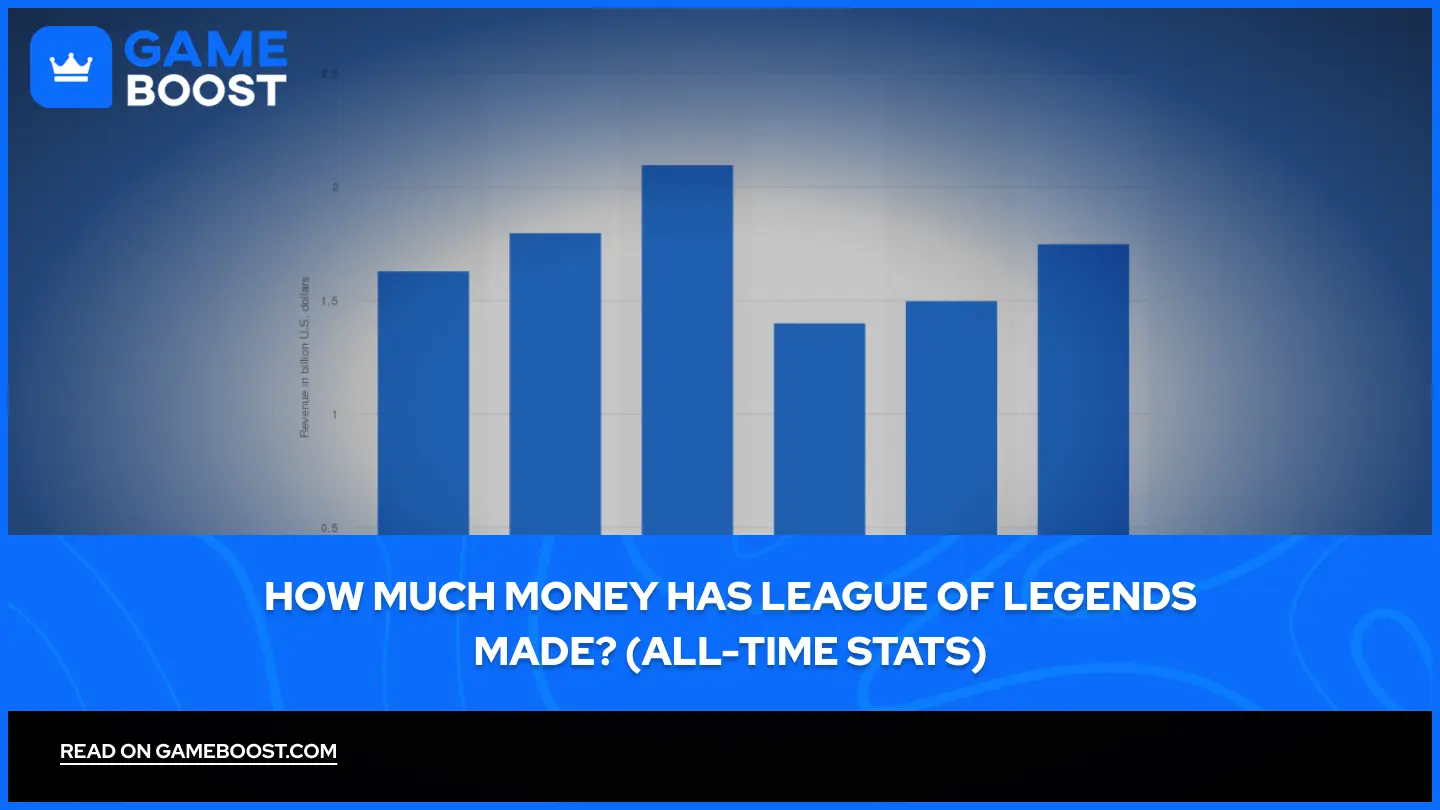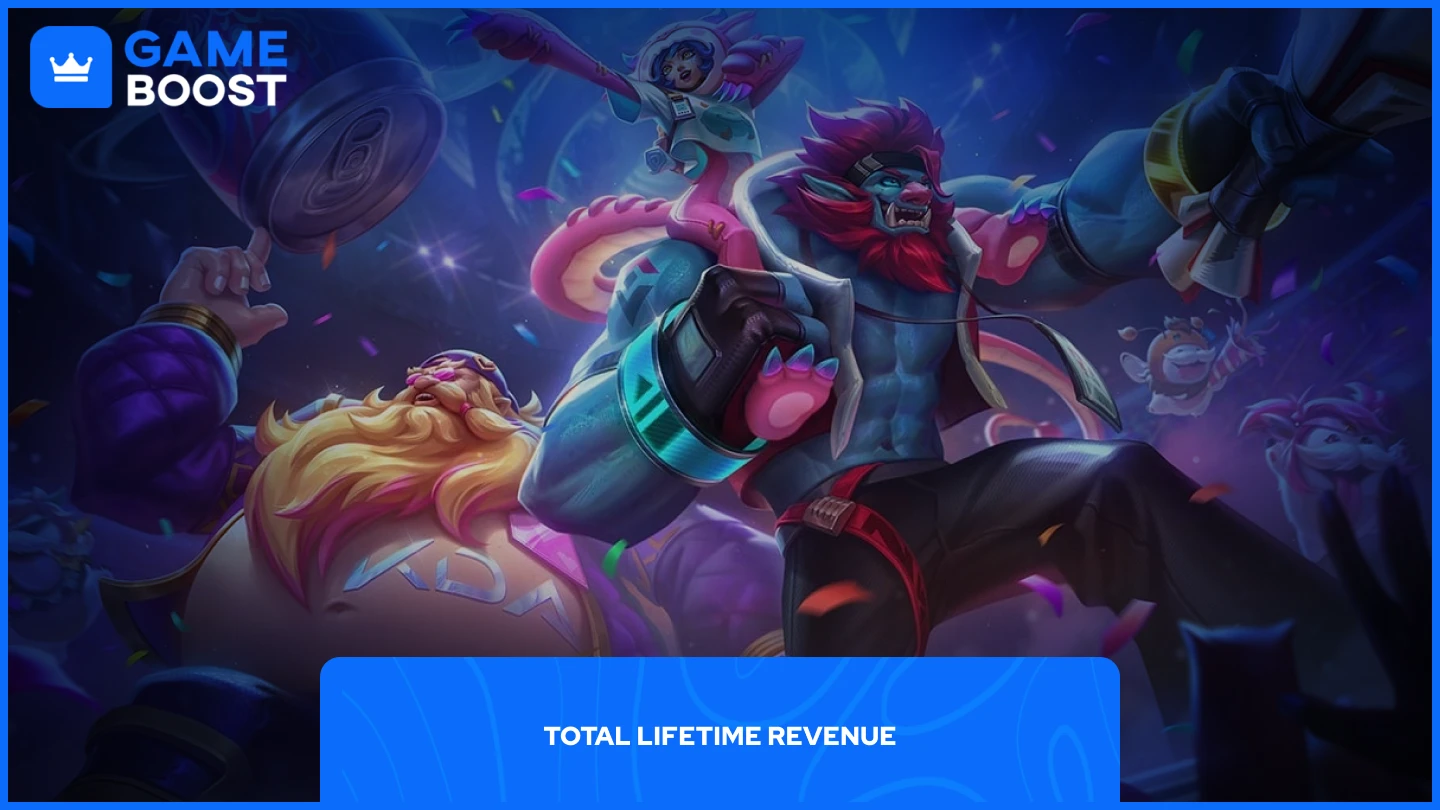

- How Much Money Has League of Legends Made? (All-Time Stats)
How Much Money Has League of Legends Made? (All-Time Stats)

League of Legends is Riot Games' online multiplayer game that launched in 2009. The game follows a free-to-play model where anyone can download and start playing without paying upfront costs. Players can unlock all champions using Blue Essence, an in-game currency earned through gameplay.
Riot generates revenue through cosmetic items that don't impact gameplay mechanics. The company sells champion skins, which change how champions look and feel during matches. These cosmetics are purchased using Riot Points (RP), a premium currency that players buy with real money.
The monetization strategy has proven incredibly successful over the years. League of Legends consistently ranks among the highest-earning games worldwide, generating billions in revenue since its release. In this article, we'll explore everything you need to know about League of Legends' monetization system and the total revenue across the years.
Also Read: League of Legends Player Count (All-Time Stats)
League of Legends Annual Revenue
League of Legends generates revenue through direct in-game purchases, including champion skins, battle passes, event passes, chromas, ward skins, and loot boxes. Players spend Riot Points (RP) on these cosmetic items and premium content.
The revenue figures below represent global earnings from in-game transactions only. These numbers exclude external revenue streams such as esports broadcasting rights, tournament sponsorships, merchandise sales, licensing deals, and other business ventures outside the game client.
League of Legends Annual Revenue (2009-2025):
Year | Revenue (USD) | Notable Drivers / Events |
|---|---|---|
2009 | $1.29 million | Launched Oct 2009; minimal initial revenue as player base was just forming. |
2010 | $17.25 million | First full year; rapid growth in player base and microtransactions. |
2011 | +$85 million | Continued global expansion; Tencent’s acquisition and launch in China fueled a revenue jump. |
2012 | $200 million | Explosive growth in user numbers globally; the game became a leading F2P title. |
2013 | $624 million | Tripled revenue with massive player engagement; Season 2–3 esports hype drew in players (second-highest F2P revenue globally in 2013) |
2014 | $964 million | Nearly hit $1 billion solely from microtransactions; continued champion releases and skin sales kept growth high. |
2015 | $1.6 billion | Surpassed $1 billion for the first time. |
2016 | $1.7 billion | Loot boxes (“Hextech crafting”) introduced in 2016 boosted spending on random cosmetics |
2017 | $2.1 billion | All-time peak revenue. |
2018 | $1.4 billion | Decline from the 2017 peak – faced competition |
2019 | $1.5 billion | Modest rebound. New content (e.g., prestige skins) and modes (Teamfight Tactics launch) helped stabilize spending |
2020 | $1.75 billion | Jumping during the COVID-19 lockdowns drove higher playtime and microtransaction sales |
2021 | $1.63 billion | Slight dip post-pandemic. |
2022 | $1.8 billion | Highest since 2017. |
2023 | ~$1.7-1.8 billion | Not officially reported. |
2024 | ~$1.8 billion (est.) | Riot continued aggressive in-game monetization (e.g. $200–$400 premium skins) |
2025 | Data not yet available | Year in progress. |
Source: Gamedeveloper, Chinadailyhk, Prioridata, Digitaltrends, Criticalhit, and Washingtonpost
Revenue growth shows distinct phases throughout League of Legends' monetization history. The game started with minimal earnings in 2009 but experienced explosive growth during its first five years as the player base expanded rapidly.
League of Legends reached its revenue peak in 2017 with approximately $2.1 billion in global earnings. This record year reflected a massive active player base and optimized monetization strategies that converted millions of free-to-play users into paying customers.
Revenue stabilized in subsequent years due to market saturation and increased competition from other games. Despite these changes, League of Legends maintained its position among the highest-earning games globally.
Also Read: League of Legends Clash Schedule (2025)
Total Lifetime Revenue

League of Legends has generated approximately $18.92 billion in total revenue from 2009 through 2024. This figure represents direct in-game purchases only. The game ranks among the highest-grossing video games of all time, with lifetime earnings surpassing $20 billion when including recent estimates. This places League of Legends in an elite group of games that have achieved such massive financial success through primarily cosmetic monetization.
When compared to other gaming titans, League of Legends sits alongside titles like Dungeon Fighter Online ($22 billion) and below inflation-adjusted classics like Space Invaders ($30 billion adjusted for inflation). However, most of the League's revenue comes from a single game rather than multiple iterations or platform releases.
These earnings position League of Legends as one of the most successful free-to-play games ever created, proving that cosmetic monetization can generate massive long-term revenue without affecting core gameplay.
Also Read: How to Get Ancient Sparks in League of Legends
Final Words
League of Legends generated nearly $19 billion in lifetime revenue, proving free-to-play games could achieve massive financial success through cosmetic monetization. The game peaked at $2.1 billion in 2017 and has maintained consistent annual earnings above $1.4 billion despite increased competition.
This success changed how the gaming industry approaches monetization. League demonstrated that players would spend significant money on cosmetic items that don't affect gameplay, creating a blueprint that countless other games now follow.
“ GameBoost - The All-In-One Gaming Services Platform with a mission to truly change the life of every day gamers. Whether you're looking for Currencies, Items, High-Quality Accounts or Boosting, we've got you covered! ”



